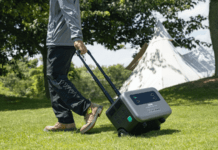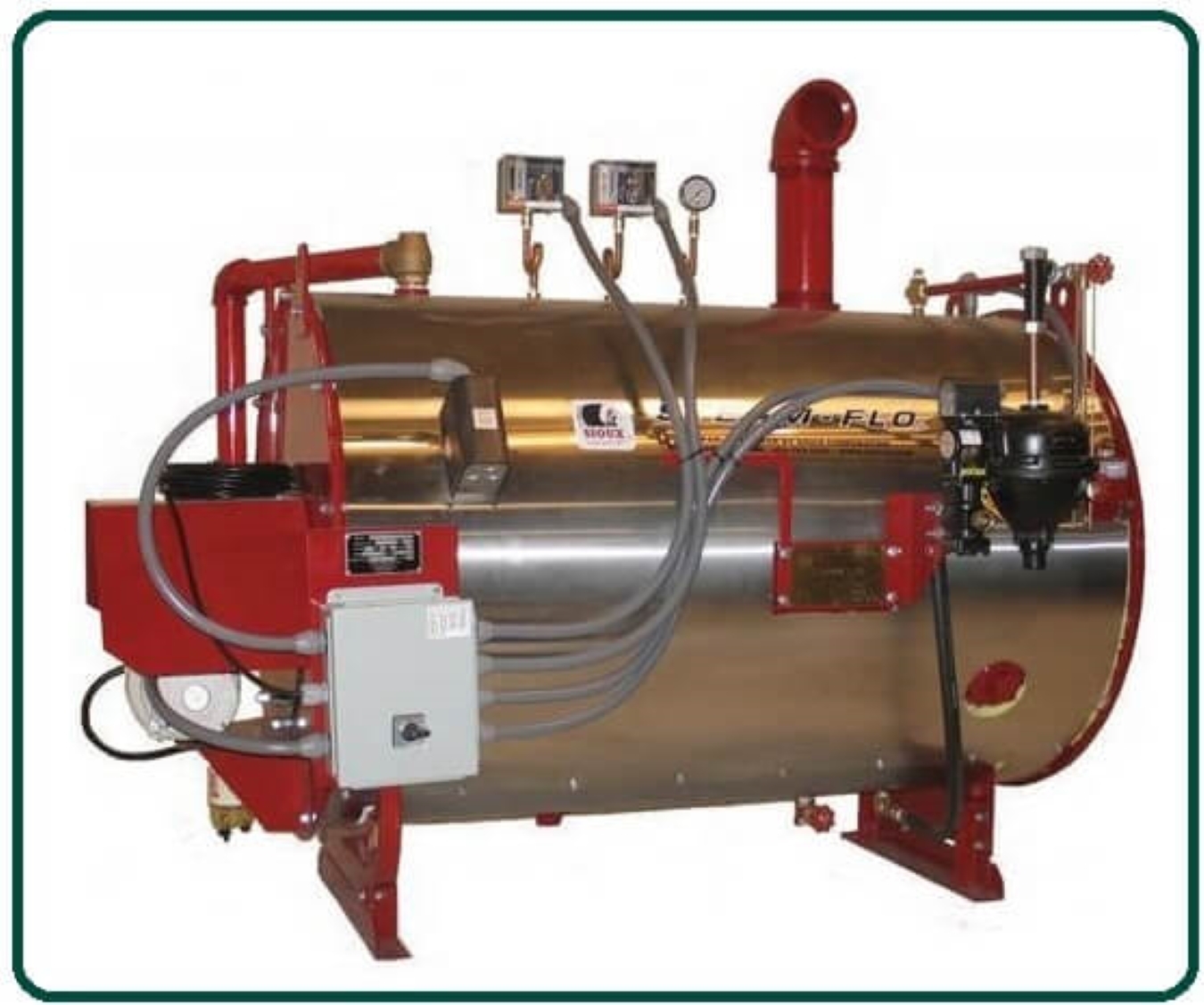What are the functions of a generator? Do you still ask such questions? Anyway, it is very important that one satisfy his or her curiosity.
However, are you still thinking about how important a generator can be in this modern-day world? Well, you need to stop thinking if you still do, because you can never overemphasize the functions of a generator.
Generators play a very vital role in human lives, which is why you can’t say you don’t need them. It is part of our daily needs, for you to do your daily work without any delay, you can’t depend on a normal electricity supply.
Generally, during the summer, there is always a breach of electricity, which always makes the weather very hot.
You probably sweat once the electricity goes off because everything goes off, including the AC or fan.
Luckily, you will have an amazing generator at your disposal. The purpose of the generator is to provide temporary electricity when the light is off.
Therefore, take a bold step by thinking of an alternative method of continuous power supply. So, this article will give you a broad explanation of what the function of a generator is in the world we live in.
Read on while I take you down to the world of generators.
Functions Of A Generator: What Is A Generator?
You are considering knowing the function of a generator, right?
First and foremost, you need to know what a generator is. This will help you understand more about the function.
However, a generator is a machine that converts one form of energy, like mechanical energy, into electricity. In other words, it is a standby device, made to power a household or office appliance when there is a power failure.
Furthermore, generators serve as an emergency backup device that generates power when needed. It is either you use it as a steady or permanent power supply, depending on the environment you find yourself in.
In most cases, you may be in a country where steady electricity is a problem, and you will have no choice but to get yourself a regular power supply.
Lastly, a generator is a lifesaver, and no business-minded person will say he or she doesn’t need a generator to do the daily routine.
Apparently, this article will not be complete if you don’t see the different types of generators. Read below to find out.
Functions Of A Generator: Types Of Generator
There are four main types of generators: portable, inverter, standby, and electrical. All of them work and function in a specific way.
Let us look at the functions of a generator under the following subheadings.
Portable Generator
This kind of generator uses fuel, such as diesel, or propane to generate electrical power. They can provide a temporal power supply.
Generally, portable generators make use of combustion engines to produce and conduct electricity. This shows that for the generator to function very well, it must have combustion engines.
The combustion engines carry the cylinder that pushes the piston to convert pressure into a rotation motion. So the combustion engine is of two types – the spark ignition gasoline engine and the compression ignition diesel engine.
Therefore, they all contribute to the working process of the generator.
Moving forward, the portable generators are professionally plugged into electrical appliances or tools through sockets. Meaning it can’t generate power without the help of the power socket connection.
It has the capacity to carry your appliances like a television, freezer, and refrigerator. In addition, the generator can be used in remote sites and can be wired in subpanels.
Finally, many business owners or residencies make use of this kind of generator because it is portable. Not only is it portable, but also generates sufficient electricity that keep the business going.
You can say generators are the heart of every household or business owner. Yes, you are right about that.
Pros
- Portable generators are very easy to maintain and environmentally friendly.
- It is less inconvenient because you can always carry it along.
- They provide power to multiple appliances which is very good when there is a lack of access to electric power.
Cons
- You can’t operate it inside a room or garage.
- It needs to be protected from the weather.
Inverter Generator
A generator basically made to help the outdoor users or campers to make their camping adventurous. It executes the plan of some workers who work long shifts without disturbance in terms of noise.
If you are expecting to see a bulky and loud sound generator like this kind of generator, I am sorry to disappoint you. You need to look beyond that by seeing the function of a generator in an inverter form.
The invention of the inverter generator has changed that perception as it is greatly low in sound operation. It has a very low sound distributor because it uses an engine that is connected to an alternator.
This simply means that it produces alternating current (AC) power which then converts into direct current (DC) power with the help of the generator rectifier.
Furthermore, inverter generators go through different phases to generate electricity. Firstly, the production that comes out from the AC converts to DC, and later they invert it back to AC.
What makes an inverter generator different from other forms of generators is that the speed of the engine adjusts itself. This is based on the amount of power that you need to use and it is highly energy efficient.
Pros
- Inverter generators are less noisy and run longer than conventional generators.
- They produce maximum performance.
- It contributes to low carbon dioxide emissions.
- Needs not to be refilled often.
- Inverter generators maintain a constant flow of current to the appliances.
- Easy to carry along.
- When you use the proper equipment, you can easily set the AC to any voltage and frequency.
Cons
- They are less powerful compared to portable generators that can power multiple tools or heavy-duty machinery in homes or offices.
- It is much more expensive than a portable generator.
Standby Generator
When we talk about the emergency or backup generator, we are actually referring to this kind of generator. This is where the function of a generator is being utilized very well.
A standby generator is an electrical device that operates automatically without any help. It usually detects a power outage and acts as fast as possible to bridge the gap.
However, the standby generator operates with a switch. The switch is automatic which then switches over immediately they sense a blackout in your building.
Furthermore, the generator has a commercially robust engine that is attached to the skid. The skid is a method of producing and storing machinery for industrial use.
In addition, this generator doesn’t use fuel or diesel to be able to operate. They are attached to a natural gas line or a propane tank for proper production.
There are some common unique features of these standby generators. They act as medical support equipment, fire protection systems, safety systems in elevators, and lighting.
Pros
- It operates in two-component ways; a standby generator and an automatic transfer switch.
- They act as an emergency power supply; this means they operate automatically.
- Most importantly, it uses an internal combustion engine.
- They also monitor utility power and run on the existing fuel in the facility.
Cons
- It is very expensive if you need to run the whole of your building.
- They require frequent maintenance – if not the engine system may begin to develop faults.
Electrical Generator
This is another type of generator that works on the principles of electromagnetic induction. The electrical generator is a device used in producing electric power.
Electromagnetic induction is the process of generating an electric current with a magnetic field. The process takes place whenever the magnetic field and an electric conductor move closer to each other through a wire coil.
Furthermore, once the wire coil rotates, it breaks the magnetic field which is between the two poles of the magnet.
Therefore, the magnetic field gets involved with the electrons in the conductor to stimulate a flow of electric current inside the operating engine.
Functions Of An Electric Generator
They are most useful in homes, shops, and offices that face regular power outages. The electric generator acts as an emergency backup to receive a steady uninterrupted power supply.
Moreover, electric generators can be used to power machinery or tools when working on project sites. This is because there is no access to electricity from the grid.
In conclusion, electric generators are useful in distant areas because electricity from the grid is not always accessible. However, it functions as a source of power to the user.
Since you have been reading through the types of generators, below is the function of a generator. Take your time to read more about the functions of a generator.
What Are The Functions Of A Generator?
Most times we may have something, but may not know the functionality. It may be invisible until the time to make use of it and you can’t find it – that is when you realize the actual importance.
In essence, there are various functions of a generator which will be explained in this article.
Permanent Power Supply
In this case, some organizations or facilities need a steady power supply in order to sustain their daily activities. A place like a hospital needs a permanent generator to be able to sustain the life of its patients.
For instance, a doctor operating on a patient needs a steady light to be able to perform his or her duty carefully. A continuous power will determine if the surgery is going to hold or not – because you cannot risk someone’s life.
Similarly, a country having a problem with the power grid needs a permanent generator, especially in the summer season.
Lastly, the functions of generators do not just stop at providing electricity in rural areas, they also stand as live support to our daily needs.
To Support The Main Power Supply
You need a generator to support the already existing power in your building. It delivers at the available time when it is needed – which then supports a power grid.
Function As Temporal Power Supply
Consider a generator as the source of power to the rural areas and construction site that does not have an electricity system.
If you find yourself working on a construction site and there is no power to keep your work going, it doesn’t go well.
However, in construction sites, they usually make use of electric generators to generate power because that is the only source of power for them. The function of a generator still comes into play on the construction site.
Function As Backup Power
Let’s assume a doctor in an emergency surgery room operating on a patient and there is a power outage. At that moment, everything will stand still because he or she wouldn’t want to lose the life of your patient.
Therefore, the example above shows how important a generator is for everyone in the world. Generators as the source of independent electric power can come to your rescue in time of need.
Plainly, it served as a backup at that time you need it most and for continuing with your work.
Function As Standby Power For Commercial Purposes
Here, the function of a generator comes to play the role of a normal electricity supply. Just imagine a hospital or business where one minute of power outage brings nothing but disaster.
However, during times of unpredicted electricity supply or power failures think of generators. They are made to be there for you always, anytime any day.
Finally, let’s talk about how the generator works.
Functions Of A Generator: Generator – How it works
Before going into discussions on the component generators, tips on how generator work is vital.
For that reason, generators are as useful as anything you can think of. It is a device that converts mechanical power into electrical energy from an external source.
How it works will give you a clue as to how to manage it. Therefore, generators don’t create electrical power on their own but use the mechanical energy supplied to them to give power.
However, mechanical energy forces the movement of electric charges in the wire of its windings through an external electrical circuit.
The flow of the electric charge composes the output electric current provided by the generator. This flow of electric charges can be induced by moving an electrical conductor that contains electrical charges in the magnetic field.
However, the movement creates a voltage between the wire or electrical conductor which then generates an electric current through the flow of electric charges.
Moreso, the generator uses fuel to operate such as diesel, propane, and gasoline in a gaseous form or natural gas.
In addition, you can build a plant house for it to stay on its own without the noise disturbing the whole building.
Functions Of A Generator: Components Of A Generator
There are components that make up a full generator set that you use.
Engine
Firstly, for a generator to function properly, it involves the engine. The engine is the source of the input that creates mechanical energy which then converts to electricity.
Specifically, the size of the engine is measured in relation to the maximum power output the generator can supply. So it is proportionate to the maximum output of the generator.
But before accessing your generator engine, there are things you need to have in mind such as the factors that consist of the engine.
You need to determine the type of fuel and valve it uses. So it all depends on the type of generator you use.
However, the engine uses different types of fuel to operate like diesel, propane, and gasoline. Smaller engines operate on gasoline while larger engines operate in the bi-fuel mode by using both diesel and gas.
On the other hand, there is an overhead valve engine, non-overhead engines, and cast iron sleeve (CIS), located at the head of the engine’s cylinder.
The cast iron sleeve ensures the durability of the engine and reduces wear and tear from occurring in the engine of a generator.
Alternator
It is part of the generator that produces the electrical current from the mechanical energy supplied by the engine. The alternator is also called the “generator head” which contains an assembly of stationary and moving parts enclosed in a housing.
There are also other factors that make up the alternator which are the metal versus the plastic housing, ball bearings/needle bearings, and brushless design.
In explanation, the metal design ensures the durability of the alternator, while the plastic housing causes the moving parts of the alternator to be exposed when it gets deformed.
Meanwhile, the ball/needle bearings make the alternator last longer. The brushless design produces clean power and requires less maintenance.
Fuel Tank
This is another component that is most sufficient in a generator. The fuel tank is the operating system of a generator that works for at least 6 to 8 hours on daily usage.
Keep in mind that fuel tanks do not work without a pipe connection to the engine. It directs the fuel appropriately from the supply line to the return line.
More so, there is a ventilation pipe for the fuel tank which prevents the accumulated pressure during refilling and drainage of the tank from worsening.
Again, the overflow connection from the fuel tank to the drainpipe prevents spillage of liquid on the generator set from happening.
Moving on is the fuel pump that transfers fuel from the main storage to the day tank.
When you talk about the water separator and the filter, it actually separates water and foreign matter from the liquid fuel. This process is to protect other components of the generator from contamination and corrosion.
Lastly is the fuel injector that atomizes the liquid fuel and sprays the fuel required to the engine’s combustion chamber.
Cooling and Exhaust
The cooling part of the generator is to help prevent it from heating up. Meanwhile, the exhaust system is to help throw out the exhaust gases generated from the gasoline or diesel engine which is highly toxic.
Battery Charger
One of the most important functions of a generator is the battery charger, it supplies a float voltage to the generator.
If the float voltage is very low, the battery will not be charged and if it is very high it will shorten the life span of the battery.
However, the precise float voltage for the battery charger is set at 2.33 volts per cell. That is the direct current output and it doesn’t need adjustment or changing the settings.
Control Panel
This is where the control of a generator takes place. It functions as the user interface of the generator.
However, it contains the electric start and shutdown, engine gauges, generator gauges, and other controls. Each of those units functions according to its output.
Voltage Regulator
It regulates the voltage output of the generator. The voltage regulator converts the AC voltage to DC current.
On the other part of the voltage regulator are the exciter windings that convert the DC current to AC current. It is connected to the rotating rectifier unit.
Lastly, the process continues until the voltage output reaches the capacity level of the generator’s operating capacity.
This means that the voltage regulator should be able to produce enough DC current to maintain the generator’s full operating level.
In a nutshell, the succeeding paragraph is going to be a recommended option for you to choose a generator that best suits your home.
Functions Of A Generator: The Top Best Generators
One thing is to know the function of a generator, and another thing is to know the best one to buy.
This section of the article review will give you the chance to make your choice of the best generator you could ever have.
However, let’s start by reviewing the five best generators on Amazon.com.
A-iPower Heavy Duty Generator
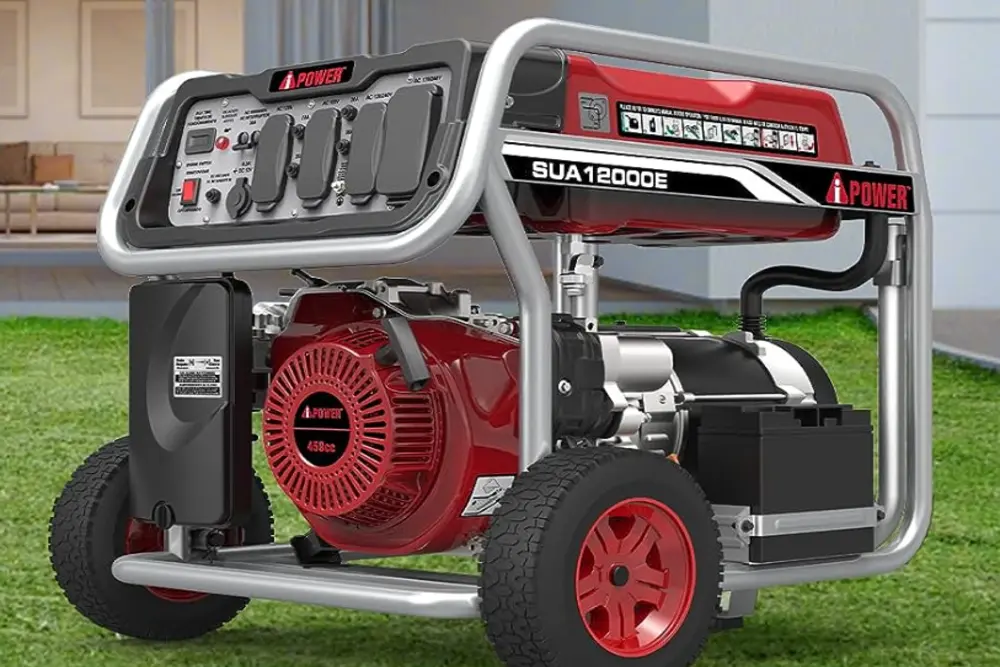
This outdoor, or home-use generator is equipped with 12000 starting watts and 9500 running watts of energy. It is an electric starter-generator that starts as quickly and easily as possible.
The engine is made in China, but you should not be discouraged, as most generator engines are made in China and function well.
Nevertheless, the energy can hold or power multiple appliances simultaneously, but cannot run everything in the building at once. Though it features a large number of outlets that can help you power your home or office appliances.
Furthermore, the generator has a 7.0-gallon fuel tank capacity, and there is a steel frame that protects it from damage.
It uses gasoline to produce power, and the engine has a 459 cc 4-stroke overhead valve. More so, it takes 50% to run at the average rate of 9 hours and 7 hours at 100%.
Simply put, you need to keep in mind that the 9-hour runtime depends on the amount of load you put on the generator. This implies that you should be expecting at least 8–12 hours of continuous runtime if the load is not too heavy.
One of the disadvantages of this kind of generator is that it generates a lot of noise. However, most manufacturers usually equip the engines with sophisticated mufflers in order to solve the problem of noise.
This A-iPower generator comes with standard mufflers but increases noise when there is so much load on it. A muffler is usually attached to the generator exhaust pipe to help reduce the noise coming from the generator.
In conclusion, you do not need to worry about the generator noise, but you should be concerned about the quality of the performance.
Champion Power Electric Start Generator
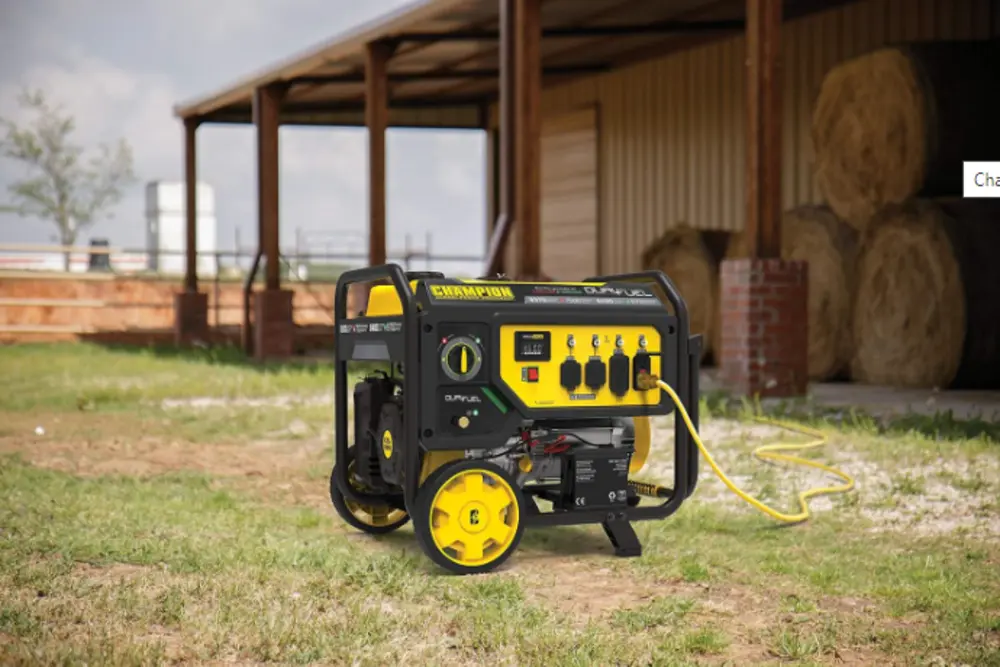
Another power generator shipped with 7500 running watts and 9375 starting watts and ran for about 8 hours at 50% load. Isn’t that amazing? Well, let’s find out more about the champion generator.
Just like the name implies, it is a dual-fuel champion portable generator that makes your powering experience remarkable.
It features a convenient electric start which has a battery, and a cold start technology that ensures a quick start in cold temperatures. It monitors power output and track maintenance intervals.
Impressively, it is built with a low oil shut-off sensor, including 1.2 quarts of 10W-30 oil. It also operates on gasoline or propane.
There is a fuel selector control that easily allows the fuel switch to switch safely between fuel sources without interruption. In addition, it comes with an oil funnel, sheet kit, engine oil, battery, and prone hose.
Lastly, the noise level is not too good, it is a bit louder, but it can still provide ultimate power backup in your home.
Champion Lift Hook Generator
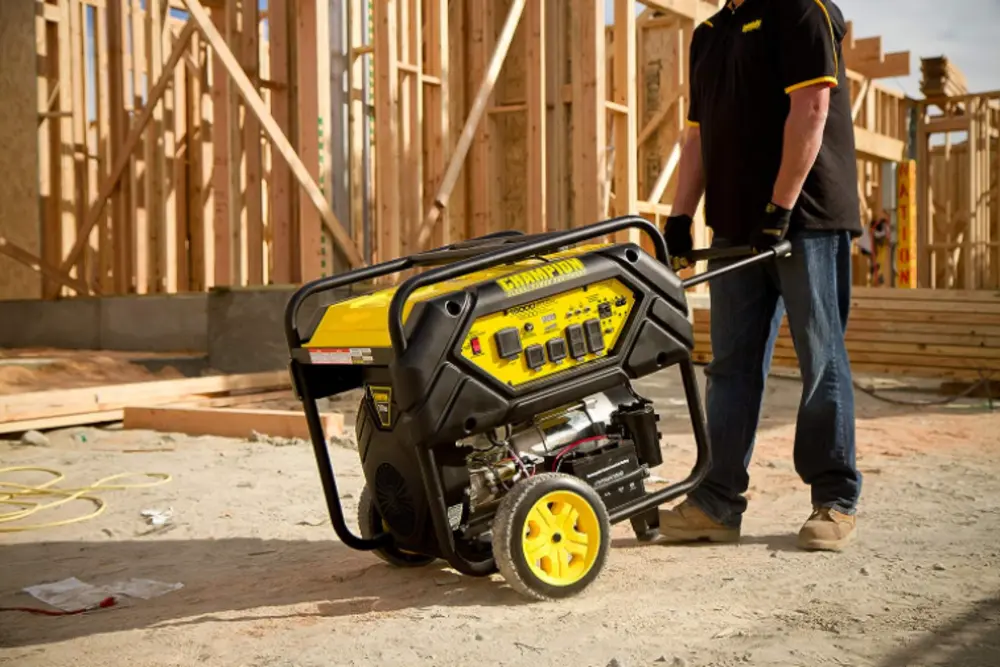
With a tank full of gasoline, this generator can run up to 9 hours at 15,000 starting watts and 12,000 running watts.
The generator features a reliable toggle switch, plus built-in cold start technology that enables it to start easily during cold weather.
Furthermore, the “Lift Hook” is added to it for safe and easy transport, loading, and unloading purposes. Additionally, there is an electric start engine, including a battery that allows you to start the generator using switch control.
Finally, there is a covered outlet like one 120V 30A locking, a 120/240 30A locking a 120/240V 50A, and four 120V 20A GFCI outlets. Adding to that is a volt guard that prevents overload and protects your appliances and equipment from damage.
Westinghouse Outdoor Generator

The Westinghouse Outdoor Generator is a strong dual-fuel portable generator.
The dual-fuel capacity can either be gasoline or propane.
More so, the generator features a fuel tank capacity of 6.6 gallons of gas and a 20-pound propane tank. It also has a built-in fuel gauge.
Unlike every other generator that comes with a China engine, this portable generator comes with a Westinghouse engine. It also comes with a heavy-duty 457cc 4-stroke overhead valve (OHV).
Surprisingly, the Westinghouse runs at an average rate of 12 hours on a single tank of gas at 50% load. On the other hand, it can run up to 7 hours when running on propane at half load.
However, the running watts are 9500 and 12500 peak watts for gasoline. While propane runs at 8500 watts and 11200 peak watts.
Refueling this type of generator at night may be a headache for you. Hence, an alternative fuel type is there for you when the fuel gets disrupted.
Note that the better fuel efficiency the higher output and more runtime it provides.
Furthermore, before thinking of buying a portable generator, you need to consider the amount of power you need. With this generator, you can run an air conditioner, refrigerator, entertainment center, etc.
Meanwhile, the operation noise level is not super quiet but it is manageable. Hence, a portable generator is not always less noisy than you expected.
In conclusion, for you to enjoy the Westinghouse generator you need a transfer and an ST switch-ready outlet. This outlet allows the automatic transfer of power during a blackout of power.
It also has a VFT display outlet that shows voltage output, frequency, and lifetime hours. This makes maintenance and performance tracking of the generator very easy.
Functions Of A Generator: Frequently Asked Questions
A machine that transforms mechanical energy into AC electrical energy is called an alternator. A mechanical device known as a generator transforms mechanical energy into either AC or DC electrical energy. Alternating current is always produced by an alternator. Alternating current or direct current can both be produced by a generator.
Portable, inverter, standby, industrial, and induction generators are just a few of the several types of generators available based on these purposes.
A mechanical device known as an AC generator transforms mechanical energy into AC electrical power. A mechanical device known as a DC generator transforms mechanical energy into DC electrical power. Periodically, the electrical current in an AC generator changes its direction.
When a facility has a power loss, the emergency generator batteries’ primary function is to supply the generator engine with power. Batteries can also offer the following, depending on the layout of the generator system: The digital control panel is powered.
You will need to run your generator for a longer period of time during power outages, especially prolonged ones. Standby generators typically last between 20 and 40 years, depending on how frequently they are used and how well they are maintained.
Further Reading And References
lowes.com: How to Use a Portable Generator
What Is An Inverter Generator: Easy Decision – Inverter or Generator


